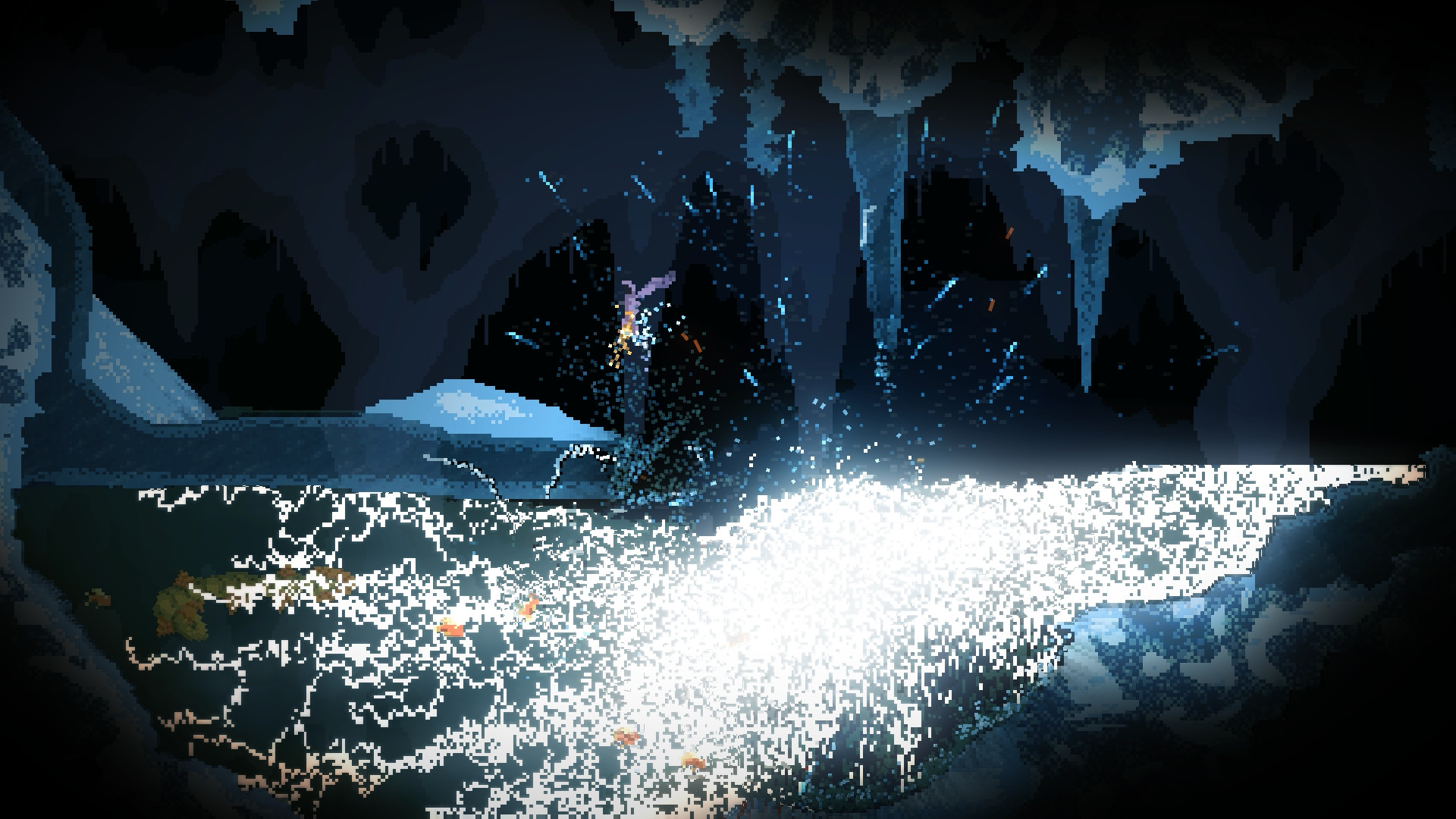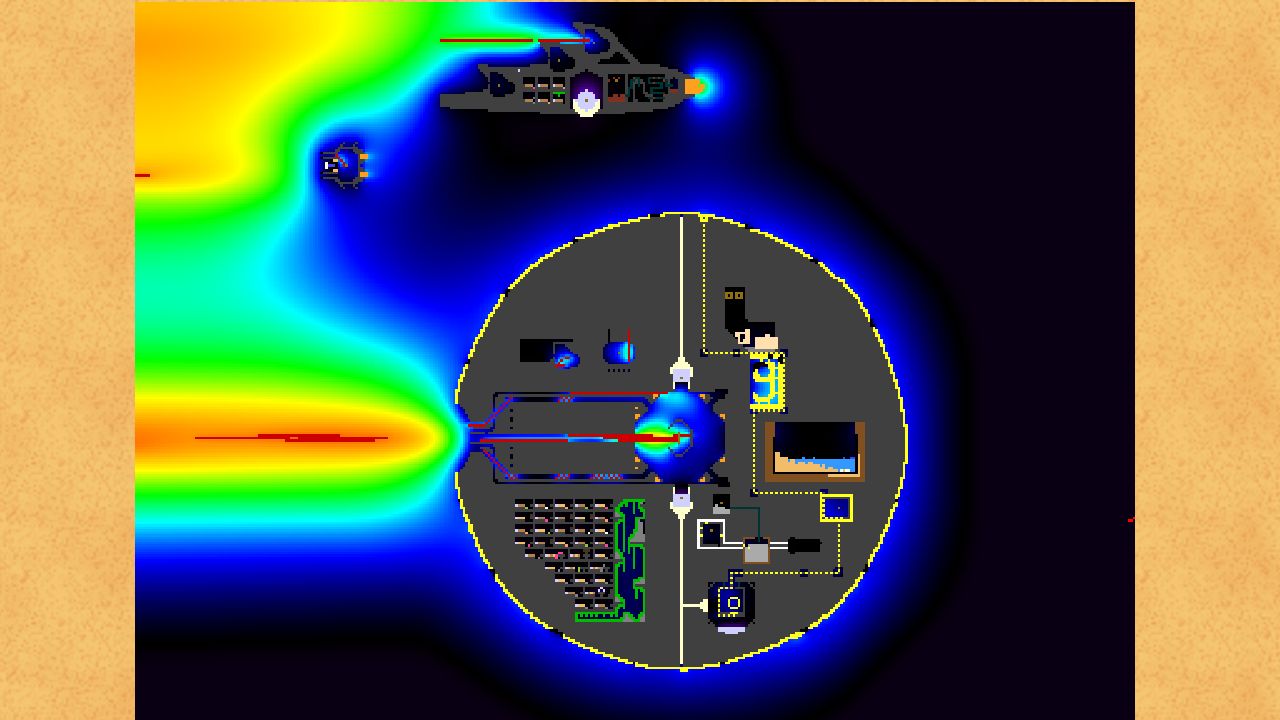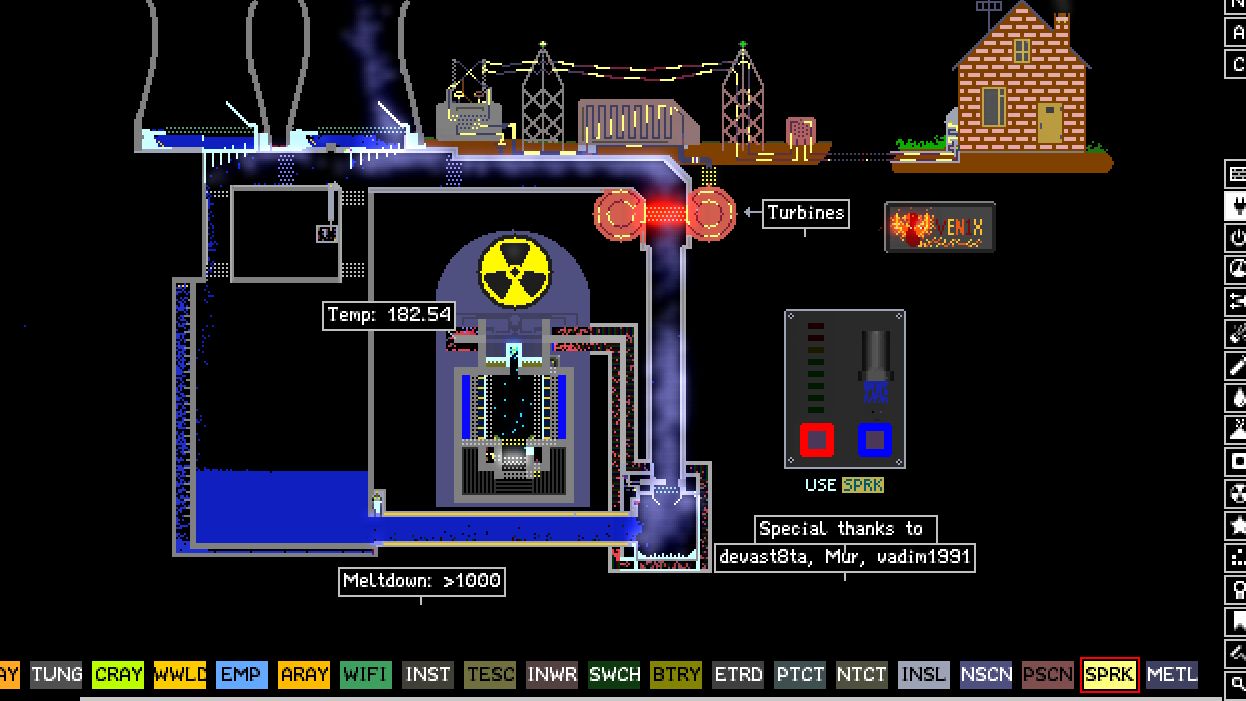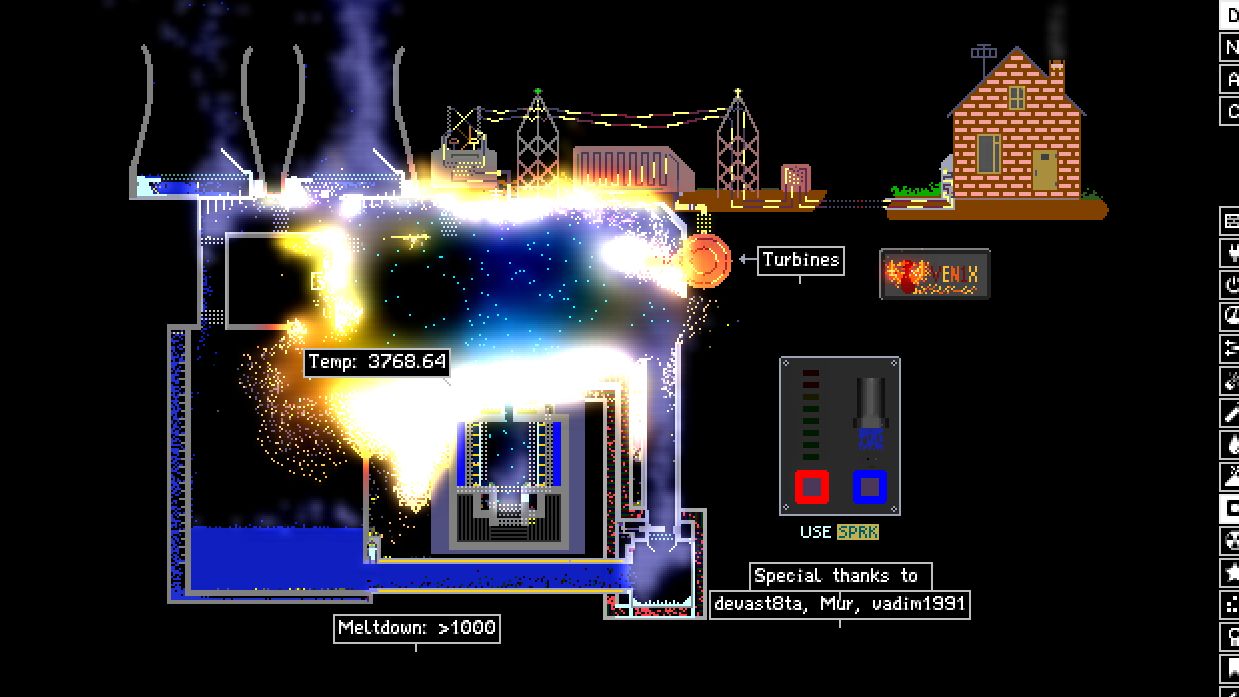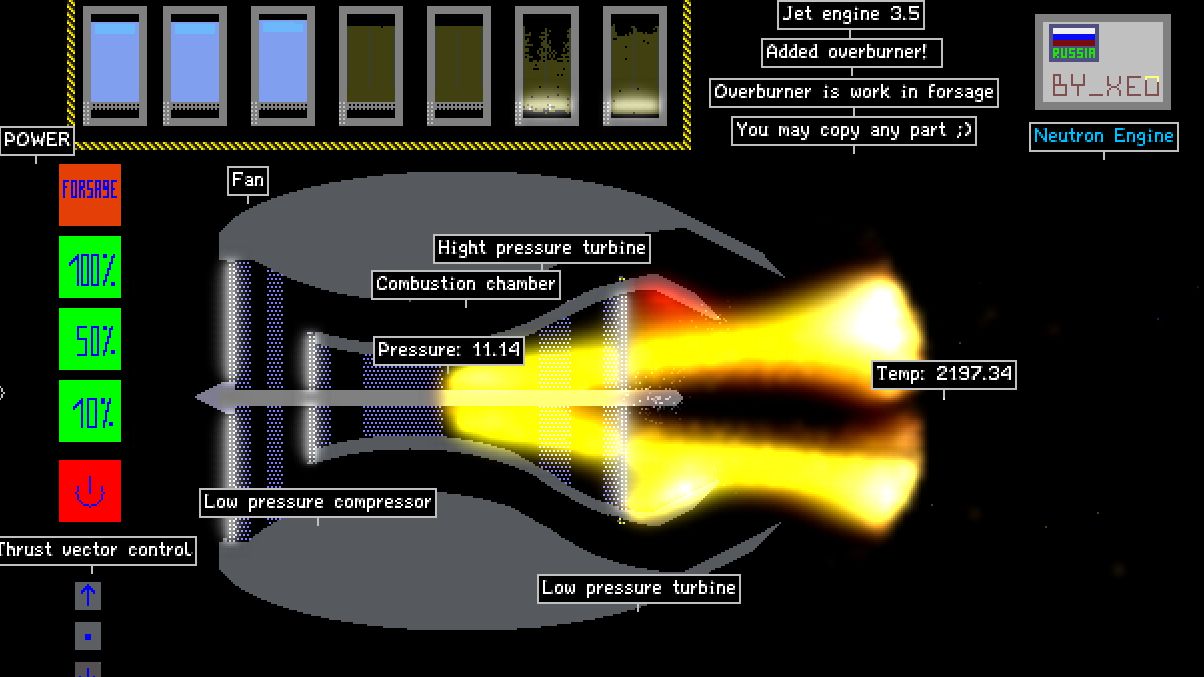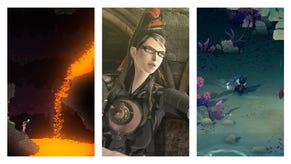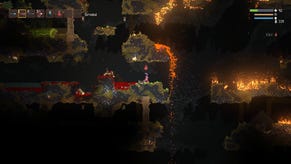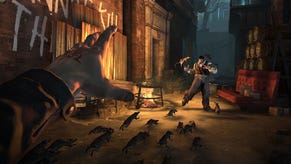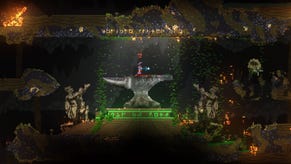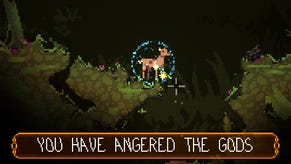From falling sand to Falling Everything: the simulation games that inspired Noita
Successful experiments
"Ants. Cover them in ants." The RPS treehouse is gathered around my screen, where several dozen stickmen are currently duking it out in a blank 2D void. This is not nearly violent enough for Sin, who has seen the Ant button. I obligingly sweep my mouse across the screen, summoning a haze of insects. Some of the stickmen jump into them, and get stuck there. "They're suspended in the ants!", I cry. "They're suspended in the ants!", cries Sin. Then she sees the button for Acid.
We're poking at Powder Game, also known as Dust. It's a 'simple' simulation where you conjure different elements and watch them interact, and I remember mucking about with it back in my school days. Little did I then know that such "falling sand" games would one day inspire Nolla Games to make Noita, their platforming roguelike where "every pixel is simulated" - but experiments have more serious consequences.
The basics of falling sand games are simple, and well-explained by one of Noita's three developers, Petri Purho, in this blog post. Before Noita he worked on Crayon Physics Deluxe, which has obvious physics-y parallels. The lineage from falling sand to Noita's "Falling Everything" engine is even clearer.
"Essentially, it’s complex cellular automata", reads Purho's post. "Every pixel in the game follows rather simple rules, but when you combine them together you get surprising and unexpected results. For example, liquid pixels first check if they can go down. If not, they check left and right to see if they can move that way. With those rules, you get a rudimentary 2D liquid. To make liquids have different densities you just compare the densities when figuring out if you can go down (and then swap the pixels)."
In Noita, you might zap a fire elemental, then sit back as its lava blood burns through the spiders around it. Then that lava might run into a pool of water, transforming some into rock and some into steam, which then might hit the ceiling and condense into rain. As fellow dev Arvi Teikari has already noted to Alice Bee, this is "seldom helpful, but interesting to look at".
Creating or observing things that interesting to look at is pretty much the entire draw of falling sand games, and goes well beyond dissolving ants in acid. In Powder Game, people have made drinks machines and Death Stars. They've recreated sonic levels, authentically visualised the danger of smoking, and built mesmerising chain reactions.
One of Noita's early forms was a little closer to these digital light shows. The third Noita developer, Olli Harjola, responded to a question in Reddit AMA saying "at one point the game was going to be a Black & White-esque game where you play as a god who leads their followers by performing miracles (i.e. pixel physics spectacles)". I'm intrigued by the game this might have been: concocting elaborate displays with a purpose beyond prettiness or novelty. Perhaps I'll still get to play it, one day. In the meantime, I have Powder Toy, another, more complex falling sand simulation.
So far we've dealt with kids stuff. Impressive creations, absolutely - but not functioning thermonuclear reactors. Welcome to Powder Toy's world of ambient heat, Newtonian gravity and water equalisation. It lets people build generators like this one.
Who can then share them with other people, who can then blow them up.
In my case, by sprinkling water into the reactor, causing the temperature to sneak up past the 1,000 degrees needed for a meltdown. Pedants might note this is half the temperature at which real world reactors meltdown, but getting hung up over that in a 2D simulation built from simple rules would be churlish.
This is just one of many ridiculous creations to be found in Powder Toy's library of community inventions. People have made bodies with functioning circulatory systems, jet engines, and many cities to destroy. And there are, of course, computers. Some with bewildering operating manuals. As with Noita, much of the appeal lies in figuring out how stuff works. Many constructs in Powder Toy, for example, include buttons that can be activated by applying sparks to them. They're made of metal, you see. It all makes sense.
By my reckoning, Noita's complexity sits somewhere beneath Powder Toy and above Powder Game. This is nicely illustrated by one of Purho's posts in that AMA, where he talks a load of hot air.
"Oil needs oxygen to burn", he says, "so depending on where the ignition happens it might not set everything ablaze. In most materials fire requires oxygen. There is a simplified temperature simulation, but there aren't really any hidden high temperature things in the game right now."
It's easy to imagine them being added, and that's one of the most exciting things about Noita. Like all the simulations above, Noita is built on a bedrock of simple rules governing simple interactions. I'm excited to see what happens over the next year in early access, now that Nolla have the (already meaty) bones of their game in shape.
Unless you've the interest and the patience required to build elaborate machines rather than just poke at other people's, falling sand games are mostly a passing distraction. Noita shines because of the agency it adds to the simulation, along with stakes. You have to search for solutions in the pixels, not just idle amusement. Like the time I got coated in toxic gunge, with no water to cleanse myself in sight. Then I realised my only chance at survival was the one-eyed flying purple people eater attacking me, and stopped fleeing in order to zap it and bathe in its goo.
It might have taken them a while to land on the right formula, but Nolla Games have struck pixelated gold.




